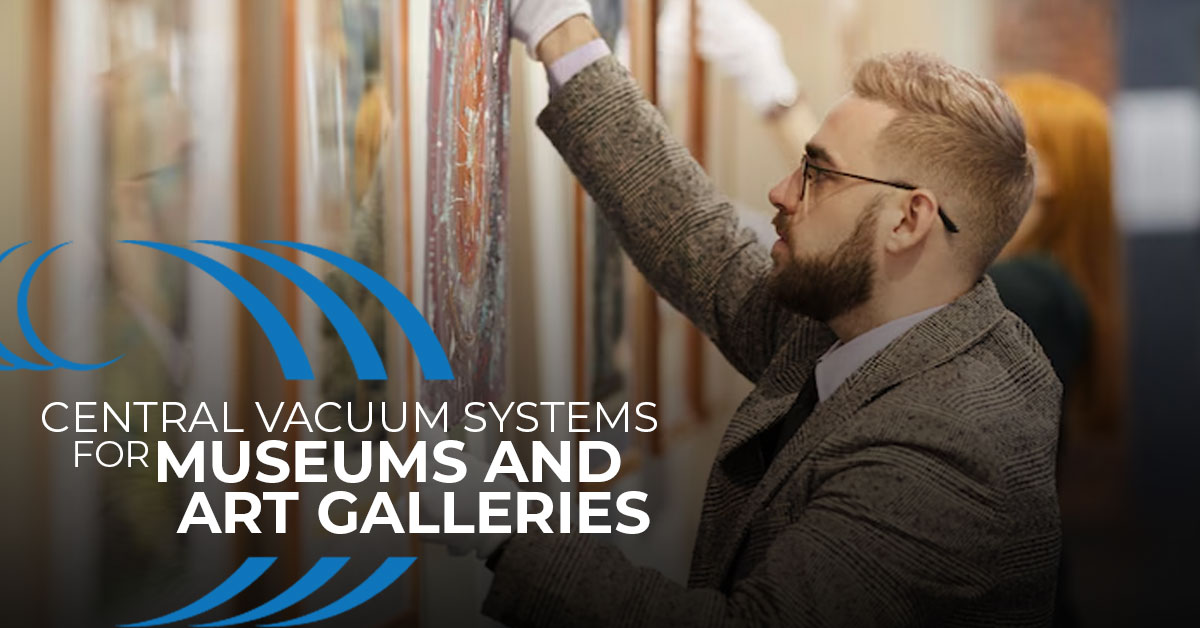The preservation of art and historical objects is a crucial task that requires meticulous care and attention. One innovative solution that has proven effective in this endeavor is the use of central vacuum systems. This article will delve into the role of central vacuum systems in art conservation, the preservation techniques used in museums and galleries, and how vacuuming plays a vital part in art and historical object maintenance.
Central Vacuum Systems in Art Conservation
Central vacuum systems have emerged as an invaluable tool in the realm of art conservation. These systems offer a gentle yet effective way to clean delicate artifacts and artworks without causing any damage. Unlike traditional cleaning methods, central vacuums do not blow dust around; instead, they effectively capture and contain it, reducing the risk of damage to fragile items.
Central vacuum systems are also highly customizable, enabling conservators to use specialized attachments tailored to the needs of different artworks. This ensures that each piece receives the specific care it requires, promoting longevity and maintaining its aesthetic appeal.
Preservation Techniques in Museums and Galleries
Preservation in museums and galleries involves a range of techniques aimed at safeguarding artifacts and artworks from damage. These techniques include controlled environments, regular inspections, careful handling, and, of course, regular cleaning.
In terms of cleaning, central vacuum systems have become a cornerstone of preservation techniques. They provide a non-invasive method to remove dust and other contaminants from artifacts and artworks, helping to preserve their original condition and prevent deterioration over time.
Vacuuming in Art and Historical Object Maintenance
Vacuuming plays an essential role in the maintenance of art and historical objects. Over time, dust and other airborne particles can settle on these items, potentially causing damage or altering their appearance. Regular vacuuming with a central vacuum system helps to combat this issue, maintaining the cleanliness and integrity of each piece.
It’s worth noting that vacuuming in this context isn’t about using standard domestic vacuum cleaners. Instead, it involves the use of a central vacuum system, which provides a much gentler and more controlled form of cleaning suitable for delicate items.
Innovative Cleaning for Museums with Central Vacuums
Central vacuum systems represent an innovative approach to cleaning in museums and galleries. By offering a gentle and efficient cleaning method, they allow for the safe and effective maintenance of a wide array of artifacts and artworks.
With a network of concealed piping, central vacuums eliminate the need to carry heavy equipment around, minimizing the risk of accidental knocks or drops. Furthermore, their quiet operation reduces noise disturbance, making them ideal for use in quiet museum and gallery environments.
Artifacts Care: The Role of Central Vacuum Systems
In the realm of artifact care, central vacuum systems play a pivotal role. They offer a reliable and efficient method for regular cleaning, which is essential to prevent the buildup of dust and other damaging particles.
Moreover, with a central vacuum system, it’s possible to use a variety of attachments, including brushes of different sizes and materials, crevice tools, and more. This flexibility allows for the optimal care of different artifacts, from large sculptures and paintings to small, intricate objects.
In conclusion, central vacuum systems have proven to be an effective solution for the preservation of art and history in museums and galleries. By offering a gentle yet efficient way to clean, they contribute significantly to artifact and artwork conservation. As such, they are a vital tool in the ongoing effort to protect our cultural heritage for future generations.





